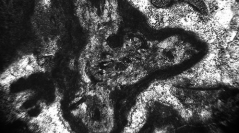

 Comptes Rendus Palevol
22 (12) - Pages 207-232
Comptes Rendus Palevol
22 (12) - Pages 207-232Revision of foraminifers, algae and problematic algae of well-known late Viséan formations in the Jerada syncline in the Eastern Meseta, Azrou-Khenifra Basin in the Central Meseta and Oued Cherrat in the Western Meseta, suggests that the recognition of the chronostratigraphic units within this period lacks most of the foraminiferal markers in the Western European foraminiferal biozonations. Many taxa recorded in the Moroccan Meseta are considered as late Asbian guides in Western Europe, but in the Meseta, they are first recorded in the early Brigantian. Although some foraminiferal taxa are proposed as guides for the early Brigantian in Morocco, this substage is far more easily recognized by the algal and problematic algal assemblages. In contrast, the late Brigantian, and thus, the equivalent to the lower part of the Serpukhovian, is recognized by typical foraminifers that have been also recorded in Western Europe. Moreover, the algae do not display any significant change at this level. The unusual and unrepresentative foraminiferal assemblages recorded from the Brigantian in Morocco, suggest that most of the numerous outcrops and sections ascribed to the late Asbian in the literature should be revised because, as is demonstrated in a few cases in this study, those outcrops probably belong to younger Brigantian chronostratigraphic units.
Biostratigraphy, Moroccan Meseta, endothyrids, Algospongia, dasycladales, Namurian